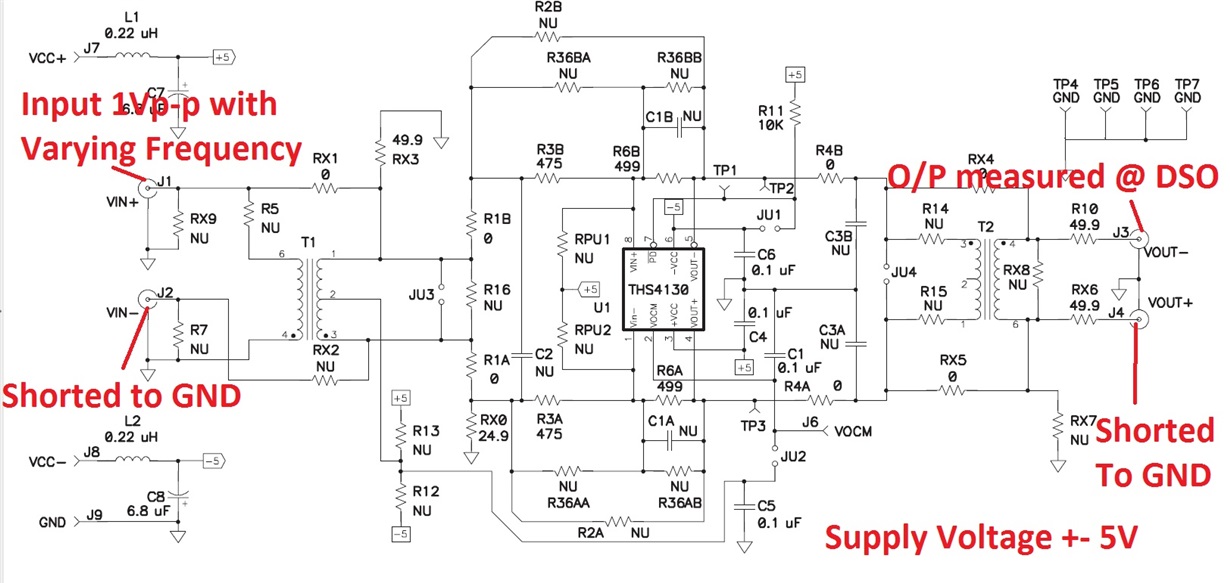Dear TI Community,
I am currently evaluating the THS4130 for one of our application.I have to tune my input signal from 1Hz to 20MHz with voltage input from 0V to 5Vp-p.It seems like we have huge drop in voltage at the output moving from 1Hz to 5Mhz range. We are performing this experiment on THS4130 Eval board only. Readings are given below:


